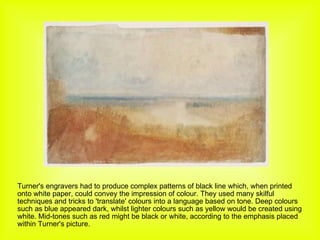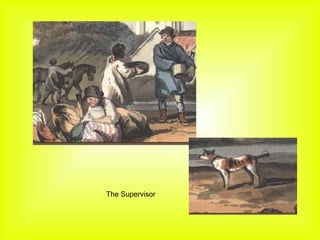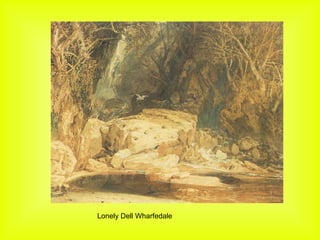This document provides an overview of J.M.W. Turner's career and watercolor techniques from 1775 to 1851. It describes how he mastered watercolors in his late teens and became known as England's greatest watercolor artist. It also details some of Turner's innovative techniques, such as allowing colors to float on saturated paper and using capillary action to lift color. Finally, it discusses how Turner experimented with color combinations and disagreed with Newton and Goethe's rigid primary color frameworks.
























































